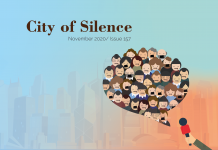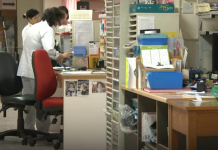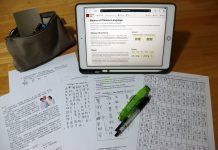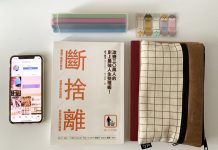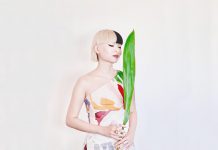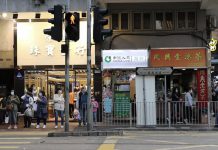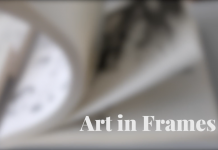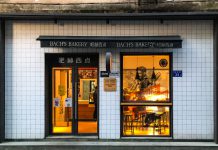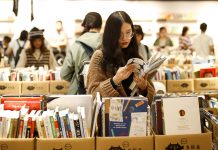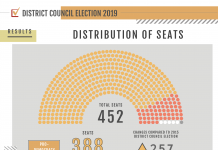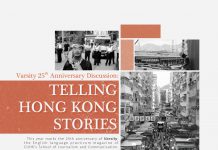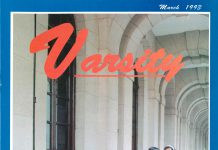A group of young artists take art to the street
By Sabrina Poh
Earlier this year, guests in smart business attire admired contemporary Asian artworks in a 15,000 square-foot gallery space located in one of the city’s most exclusive office rental spaces. The artwork could be purchased for prices of between HK$160,000 and HK$5.5 million.
The guests were attending the opening party of a permanent new gallery opened by international auction house Sotheby’s and which is just one of the western art houses who want a presence in Hong Kong. The city has become the third largest auction centre in the world after New York and London. The Hong Kong art market is vibrant and new galleries seem to be opening constantly.
But that may not mean much to those who care about local art. Victor Liu Hing-yuen feels the art scene in Hong Kong only serves one group of people – the affluent. “It is just for rich people to buy luxuries and stuff,” says the 22-year-old fashion designer. “Art should be part of everybody’s life.”
At one gallery opening early this year, he began talking to a young artist who had just finished her studies abroad. He was attracted by her idea of bringing art onto Hong Kong’s streets, and joined her group of art lovers.
Members of the group do not create artworks in studios. They make art in unconventional venues and in public. They make life-drawings outside the Hong Kong Cultural Centre in Tsim Sha Tsui and in front of the Times Square shopping centre in Causeway Bay. They even have sketch-ins on the MTR.
This community of street art advocates has been growing since January this year and was hatched by two 22-year-olds, Jessica Poon Yin-tong and Vivian Ho Pok-yan. The two, who have been good friends since secondary school, both left to study in different US universities before returning to Hong Kong.
“The whole concept of the street art movement is that we advocate the joy of making art and non-commercial art,” explains Ho. “Ordinary people can make art and have good taste too. So we decided to put the whole thing on the street.”
Having practised graffiti before, both Ho and Poon were underwhelmed by the quality of graffiti in Hong Kong. “Jessica had an idea: let’s find a wall and put our own stuff on it, and then tell our friends to come, treat them to egg tarts and stuff, and have a show together,” Ho recalls.
Having experienced different cultures when she studied visual arts in the US and Italy, Ho realised street art could be both popular and acclaimed, whereas in Hong Kong, it is unappreciated. “Street art is not important in Hong Kong, but it should be,” she says.
By comparison, Hong Kong seemed staid and lacking in the spontaneity and eclecticism she had encountered abroad. Ho and Poon called themselves Street Art Movement or Sze Fut Hang in Cantonese. It is a play on a Cantonese phrase that literally translates as “itchy bum”, which means “troublemaker” in Chinese, ”We are troublemakers,” explains Ho. “If even your ass can do it, everybody can do it.” They now also call themselves House for the Bum.
The troublemakers put their plan into action after they found an alley in Mongkok. They spent two weeks covering the walls of the alley with artwork and their first event, a graffiti street art exhibition was born.The exhibition was a send-up of the commercial, high-art world, complete with a gallery opening. They gathered artists on Facebook and invited them to come. Artists designed T-shirts for an auction and bidders had to think of creative ways to win the T-shirt they wanted.
“You could tell a story, sing a song or do upside down push-ups,” explains Ho. “It was more like a game where everyone could gather together and have fun.” There was even a live band, which drew passers-by who were curious to find out what was going on. Some were amazed to find a hidden enclave of graffiti. What had started as an idea shared between two friends grew and gathered like-minded young people who agreed with Ho and Poon’s mission statement: “We’re poor but we have taste!”
“Even if I am not a professional painter or an artist, I can still participate in it, so that is why I go to the events, even if I don’t draw,” says Steven Chung Chun-kit, one of the participants. The 26-year-old advertising creative agrees that everyone can be an artist.
Chung says the Street Art Movement brings together a group of individuals who want to challenge the stringent rules and restrictions in Hong Kong by doing something on the streets for the public.
“I think this is one of the most exciting events I have ever participated in in Hong Kong,” Chung says.
Conducting impromptu public events carries risks. Police checked Ho and Poon’s Identity Cards three times when they were making graffiti in the alley. Security guards ejected them when they were doing life-drawings on the stairs outside the Hong Kong Cultural Centre because they had not booked the venue.
In August, Ho arranged a drawing session on a train along the MTR’s Tung Chung line. Participants posted their work on the handrails and members in special costumes boarded the train at each station. After an hour, the event ended because MTR staff received complaints that they were disturbing passengers.
Ho thinks the general public in Hong Kong is not interested in street art because of the general atmosphere of restrictions and rules. Hong Kongers may also simply dismiss the possibility that they might take part.
“You cannot blame it on the people, because firstly, we do not have formal art education for all,” Ho says. “We are not trying to complain about anything; we are trying to advocate, to promote this idea, and bring this issue onto the table.”
Geeio Yuen Ho-lam, who has taken part in most of the events organized by House for the Bum, thinks things are improving slowly as more people learn about art.
“We are not making trouble, we just want to draw and share stories,” the 27-year-old designer says. “If anyone doesn’t like our attitudes or actions, we will be like: ‘Sorry, we won’t draw you’.”
In fact, one of Ho and Poon’s main goals when they organise the events is to interact with passers-by. They encourage participants to tell passers-by about what they are doing and to explain that art is fun.
Designer Victor Liu’s experience of public life-drawing is positive. “Strangers find us strange because they are not comfortable with a bunch of people holding their sketchbooks,” he says. “But later on they asked: ‘Oh can you do a portrait for me? I can be your model.”
What starts as an ad hoc portrait drawing initiated by one party can turn into a conversation with a stranger, as Geeio Yuen found out during his first life drawing session on MTR.
“I drew a man whose age was around 50. Then we chatted about kids nowadays, their attitudes and trends, about the difference between people of different generations,” Yuen recalls. “The feeling for me is special.”
In Yuen’s eyes, Hong Kong people focus more on money and the material aspects of life, even when it comes to art. Galleries in Hong Kong mostly aim to make money. “For them, most artists are just like a product,” he says. “But a lot of people from the younger generation are doing different kinds of art. To them, it is not for money.”
Gallery owner Cathy Lee May-yee is also a participant of House for the Bum. She has praise for a group of young art lovers trying to present themselves to the public. But she also points out the hard fact that opportunities and markets are lacking for potential artists in Hong Kong.
“All artists dream of a gallery or a museum to showcase their art. Unfortunately, here in Hong Kong, a local artist can only find places like a boutique or pub to show that he is a really talented artist,” Lee says.
Ho agrees that galleries in Hong Kong do not think highly of local artists. “They endorse Chinese contemporary artists or those that sell for big money,” she says. “We feel like art in Hong Kong is either really high-end or only in galleries and museums.”
Yet, when it comes to street art, nobody needs to be the next Picasso, Rothko or even Yue Minjun.
“I like these events,” Yuen says, “because art is not something really advanced or should not be considered a luxury. Everyone can share art, everyone can have art.”
Ho says some participants were worried about their drawing skills but she told them to just give it a try. “We think art has many forms and many styles. One should not be limited to just a certain standard,” Ho says. “Everybody can do art.”




